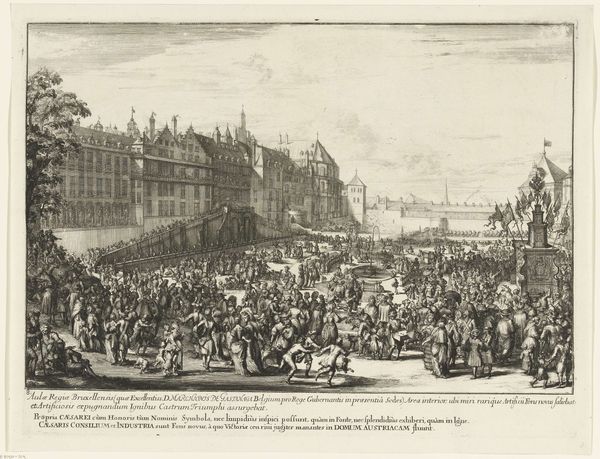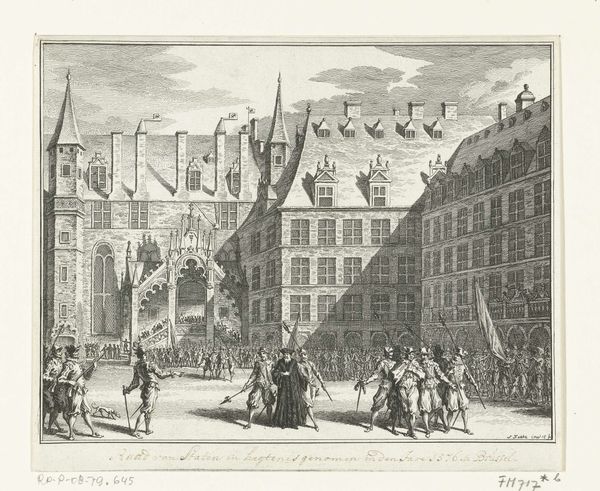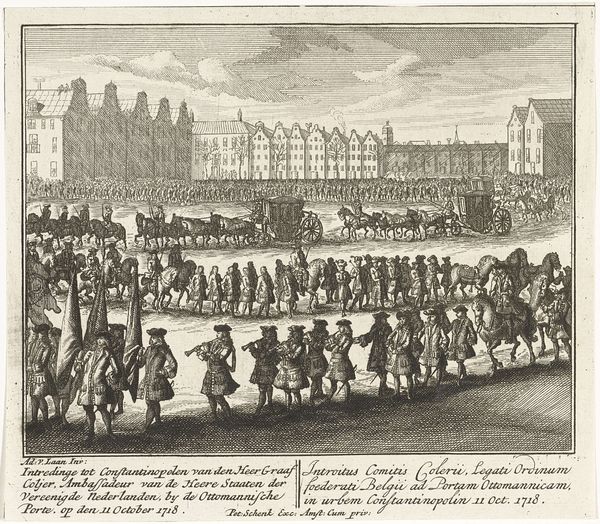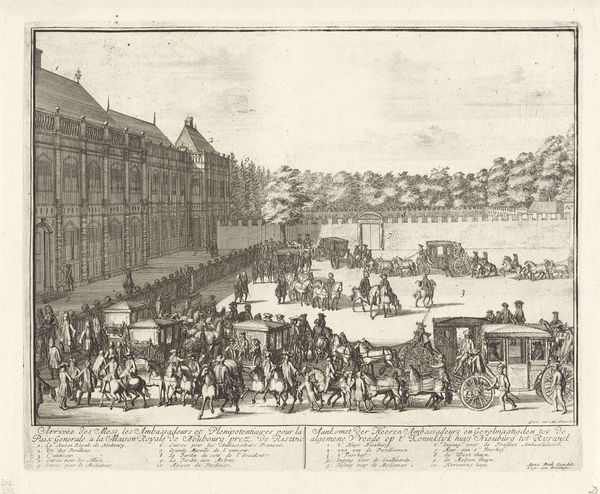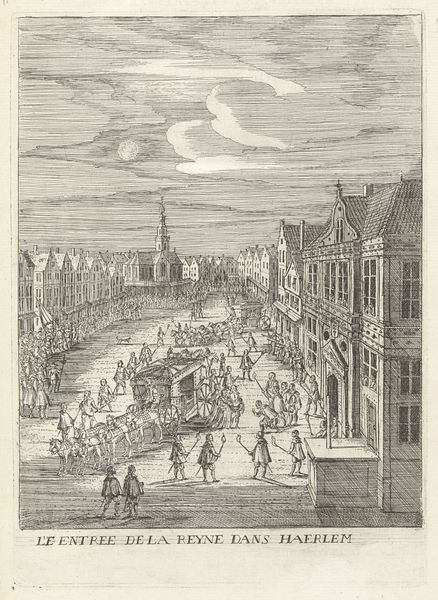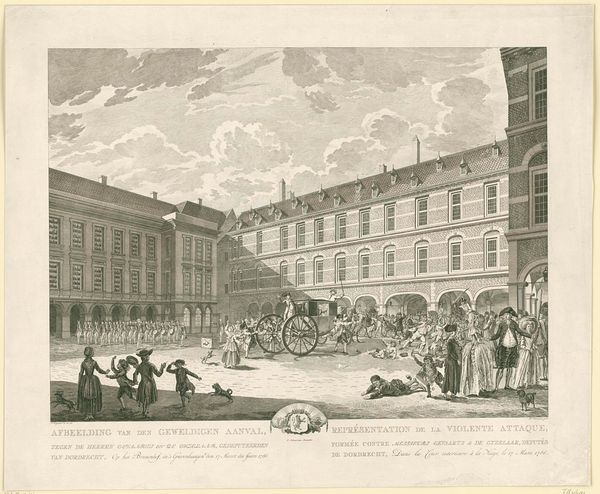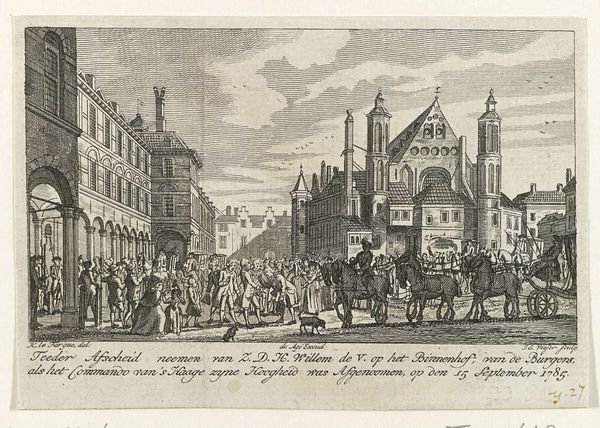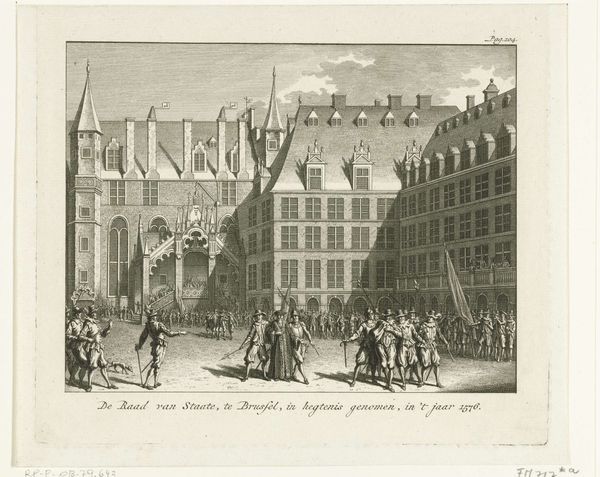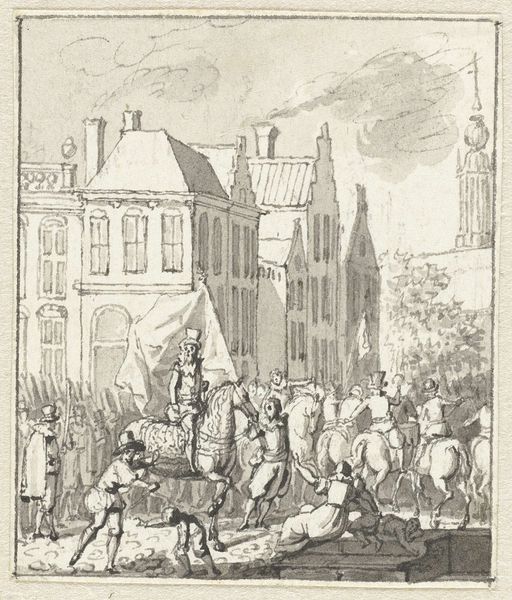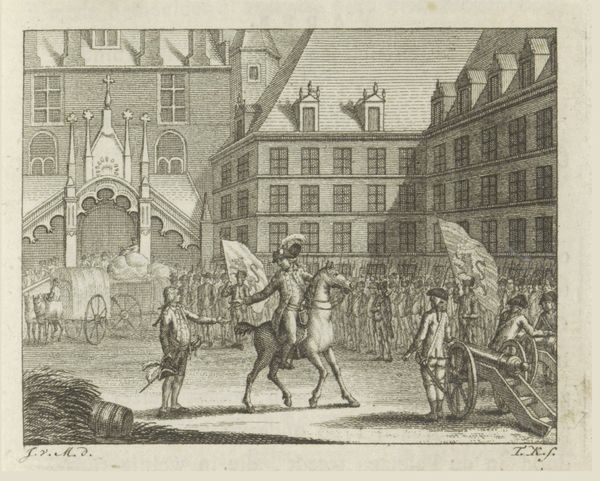
print, engraving
#
baroque
# print
#
old engraving style
#
perspective
#
line
#
cityscape
#
history-painting
#
engraving
Dimensions: height 409 mm, width 550 mm
Copyright: Rijks Museum: Open Domain
Curator: This intricate engraving, titled "Intocht van Leopold I in Brussel," captures a moment of significant political theater in the late 17th century. Executed by Romeyn de Hooghe around 1686-1687, this print commemorates Leopold I's arrival in Brussels. Editor: It feels very staged, very deliberate. All that open space with everyone milling about, but the imposing buildings looming in the background—it gives the impression of power, doesn't it? Curator: Precisely. The architectural setting—note the imposing facades—emphasizes the gravitas of the occasion. It places Leopold within a historical lineage of rulers and showcases Brussels as a center of power. The work very deliberately uses perspective and details of urban space. Editor: I'm drawn to the symbols scattered throughout. The canons, the trumpets...it's a visual cacophony announcing not just Leopold’s arrival, but the established authority of the Habsburgs and Catholic traditions of this event’s public display. I wonder, do you see anything specifically interesting there? Curator: Absolutely, Romeyn de Hooghe, working as an engraver here, clearly knew that imagery like this could influence public perception, framing Leopold's rule in a favorable light during times of shifting allegiances, even setting the stage to quell dissent, at times. Note also the allegorical elements, and it isn't simply celebratory but functional to secure legacy. Editor: I see that now. Thinking about that framing and influence over time, the print serves as a constant reminder, not only for that generation but to posterity of the Leopold Dynasty's power in that cultural landscape. Curator: Indeed. It really highlights the way prints could become powerful political tools for creating and disseminating ideology through popular forms of art, it isn't just the depiction of a public arrival in one city in Europe, it became part of a calculated political agenda. Editor: It leaves one considering what other seemingly benign commemorations truly intend. Curator: Indeed. Thank you. I hope our audience enjoys the exhibition today.
Comments
No comments
Be the first to comment and join the conversation on the ultimate creative platform.
